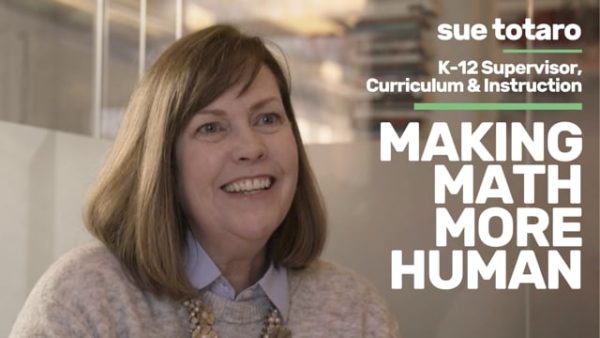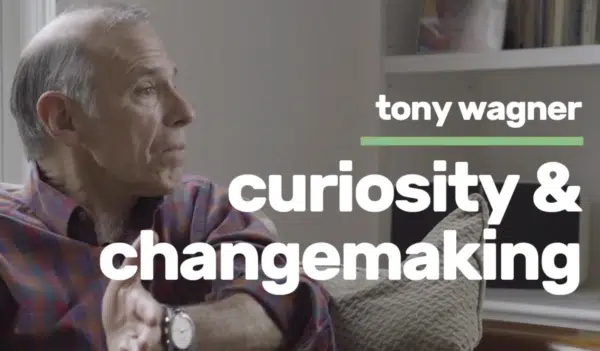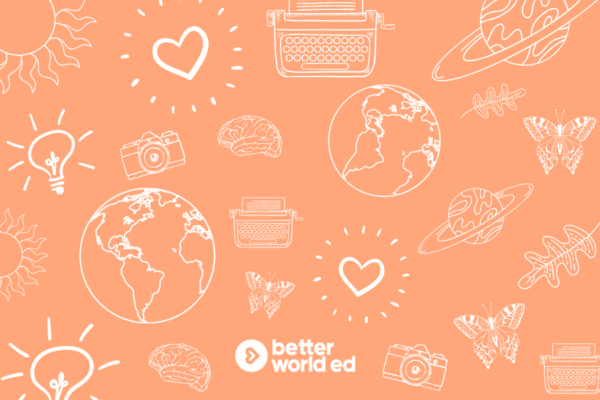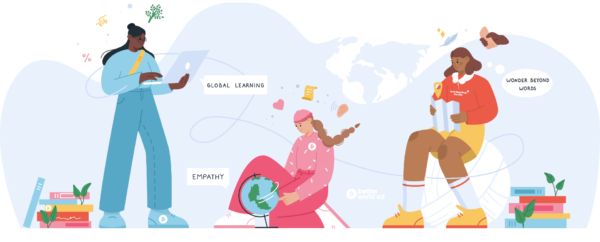Humanizing Stories Are Essential For Seeing Our Shared Humanity
We can and we must humanize learning. Humanizing stories are essential for seeing our shared humanity. Click the article tab to dive in.
Categories
Articles, BeWE Learning Journey
Tags
Approach, Early in Life, Every Day, Everywhere, Global SEL, Mission, SEL, Vision, Why BeWE
Browse Related Articles and Resources
Humanizing Stories Are Essential For Seeing Our Shared Humanity
Seeing Our Shared Humanity
Humanizing stories are critical in our world today. Too many children grow up without consistent support to practice understanding diverse people, cultures, mindsets & perspectives. Without support to see our shared humanity.
When we don’t use our empathy and critical thinking muscles, our ability to see one another as unique amazing humans starts to wither away. That leads to knots in our chests, inauthenticity, close-mindedness, bullying, inequality, intolerance, family fights, and violence.
That’s why we exist. To encourage compassion for self, others, and our world. To work alongside teachers and students, learning and listening, so we can bring students the stories that open hearts and minds early in life, every day, and everywhere.
Children can and will help all of us come back together with humanizing stories to help us see one another and our shared humanity. Children can help us all find the youthfulness somewhere deep down in us. They can remind us that those dreams we had for a better world are possible if we live from our hearts, no matter how unlikely our minds say this future is.
In building Better World Ed, our big bet is on children leading humanity from our heads to our hearts. Often people will say “we need to teach youth _____”. We see this a bit differently. To us, it’s a two way street. We believe we as educators and parents need to help youth teach the rest of us how to be more loving, authentic, compassionate, vulnerable, curious, and empathetic.
On this mission for us all to love learning about self, others, and our world, it’s key that we see youth not as recipients or beneficiaries, but as true partners. That’s what Better World Ed’s humanizing stories are all about. To see our shared humanity.
People have asked often: “But how do we actually reach people early in life, every day, and everywhere?” “How do we make empathy and understanding possible for everyone when there are SO many loops and hoops and barriers to making this possible?” “How do we do this while staying true to our purpose and values in every aspect of our lives and work?”
Here’s the Better World Ed approach and mindset on this journey to help you(th) love learning about self, others, and our world. About our shared humanity. On this journey to make the daily practice of empathy and understanding possible. Even magical.
Seeing Our Shared Humanity Early In Life
Languages, bike riding, swimming, reading, laughing. It all just goes so magically well when we start early. And there are oodles of research showing how important it is to fuel our capacity to empathize, to be curious, to think with awareness, and to practice compassion.
From our experiences as students, as teachers, as storytellers, and as observers in hundreds of classrooms, we’ve also seen how critical it is to SHOW to drive curiosity, instead of starting a lesson with a flood of info.
We create our videos and stories with 3 year olds and every-year-olds in mind:
- Wordless: words are hard. They’re hard for adults, and many three year olds can’t understand the words in basically any video out there. So we just don’t use words. It gets kids hooked, whether they can read and understand spoken languages yet.
- High Quality Videos: kids love videos. Everybody loves videos, but kids especially love videos. Kids also have a super high quality bar when it comes to watching content. They know what’s good. So we focus on making the good stuff with world class storytellers. We invest the resources needed to make high quality stories possible.
- Human Stories: a case study of a region of Kenya or rice farming in India doesn’t hook a 3 year old. The story of the farmer does, though. A human’s dreams, challenges, smiles, laughs. Human-ness. Every little thing that makes one human. The younger we go when working with kids, the more we’re seeing that stories of humans get kids on the edge of their seat wanting to learn more. Meaningful learning requires a foundation of powerful human stories that help us see our shared humanity.
Seeing Our Shared Humanity Every Day
Who hasn’t talked about the importance of practice? We all know in our hearts and minds, and in our personal experiences, that practicing something helps us get better at it. The same goes for becoming more empathetic, more curious, more aware, more creative, and more compassionate. These kinds of competencies and skills require practice. It’s like any other muscle — we need to exercise our empathy and understanding muscles for them to grow. We need to exercise our ability to see our shared humanity.
From our research and learning in the early days of Better World Ed, something we heard from teachers and students without fail was that it was really hard to practice deep gut-level empathy and cultural understanding weekly, let alone daily. That doesn’t work in our book.
We create our lesson plans and stories with K-12 academic needs in mind:
- Academically Standards Aligned: No matter where you are or what you teach, there are ways to incorporate our stories into your math and literacy lessons. With almost all schools on the planet caring about a student’s math and literacy learning, this creates opportunities of all sorts. You can use these stories to open a decimals unit, close a writing unit, reinforce a fractions concept, introduce a new more complex math concept, practice better question asking, and basically anything else you can imagine. We link each and every story and lesson to some kind of math or literacy goal that a PK-12 teacher might focus on next.
- Not Stale: Teachers so often tell us their students get bored. Students very frequently tell us school is boring. You, reader, were probably bored in a good amount of class time during school. It doesn’t have to be this way. Our videos get kids hooked on learning about the world, and our stories keep kids going throughout the day. Teachers often come back saying, “my kids didn’t even know we did math today. They forgot it was lunch time, and wanted to skip lunch to keep talking”. The magic of our stories is in the engagement.
- Homeschooling Ready: We design these stories and lessons in a way that a student can practice at home. A student can bring a story home as family discussion at the dinner table, and parents can become the teacher or the student — or go back and forth. So even if a student doesn’t have a lesson happening in school, there’s a way for them to keep immersing in learning about themselves, other people, and our world. Every day. These stories are perfect for homeschooling!
Seeing Our Shared Humanity Everywhere
Widespread change requires widespread reach. For us to create a more compassionate, caring, curious, and beautiful world, we’ve got to get everybody moving from their heads to their hearts.
Mindset shift for a few humans won’t change everything with the depth or breadth that we so deeply need in our world today. Think about it. You’ve got some amazing idea for how something could be better at work. Your child has some amazing idea for how to start a cool campaign in school. What’s needed next? Other people to join you in making this reality.
We create our wordless videos, human stories, and lesson plans with our shared humanity in mind:
- Wordless: We all speak different languages. We’ve designed thousands over time. And we don’t yet have a way for all of us to understand the words coming out of each other’s mouths. That’s a huge big mess when trying to make videos with words. Translating videos is expensive (way more expensive than simply translating our stories and lesson plans). Finding people to translate or voiceover well is hard. And, at the end of the day, translated stuff usually doesn’t have the same magic as the original language the content was created in. Videos without any words at all make all of this moot.
- Globally Diverse Stories: Too often in our world’s media, stories that get in front of kids are made in and about the US or with a US lens, no matter who the audience actually is. And too often, there isn’t even really diversity and representation in that content. In education, that problem feels even worse. Our stories are increasingly from, well, everywhere. Our goal is to have stories from every country and every region of the world, about people from all walks of life and all kinds of backgrounds and perspectives. It’s challenging, and it will be a massive learning experience as we go, but it’s absolutely necessary to be a useful and relevant resource all over the world.
- Math Is Universal: Everybody going to school is learning math, or at least is likely supposed to. And, well, math is everywhere in our lives no matter where we live. So focusing on math first, a topic that’s a focus and often the priority in schools around the world, makes it possible for us to be a useful resource in any environment anywhere in the world. Our stories integrate academics seamlessly into the journey of seeing our shared humanity.
Humanizing Stories Are Essential For Seeing Our Shared Humanity
If we can reach youth early in life, every day, and everywhere on the planet with stories that help them sustain and deepen their awareness and curiosity and compassion, then they will lead us to a better world in ways we can’t even yet comprehend. They’ll help us get out of our heads, and move towards our hearts.
Youth can lead us to a more compassionate, interconnected, curious world that sees the limitless potential of WE. Let’s make this magic possible together with authentic human stories to help us see our shared humanity.





